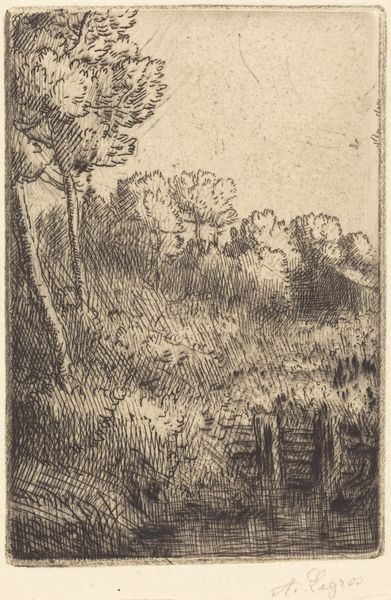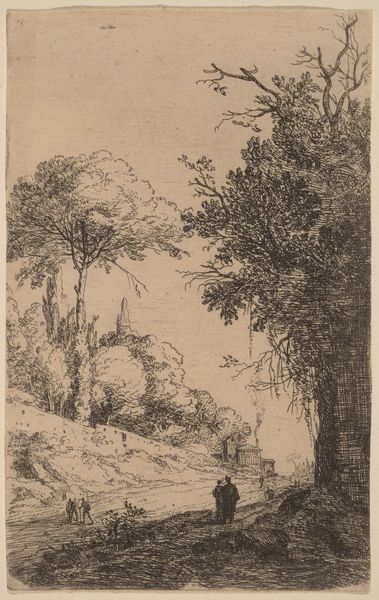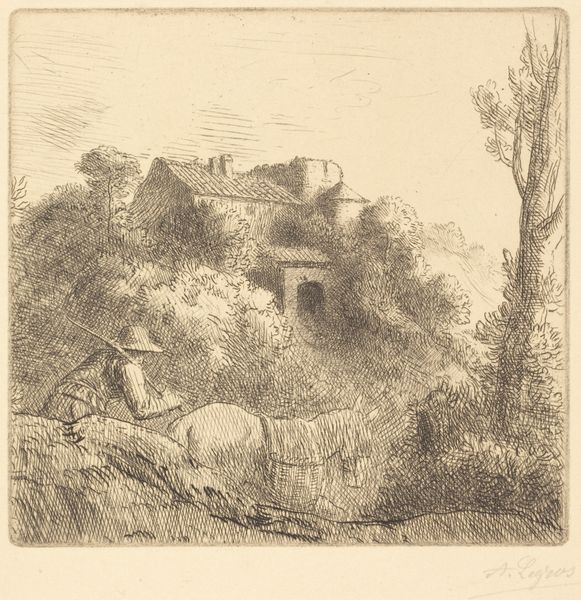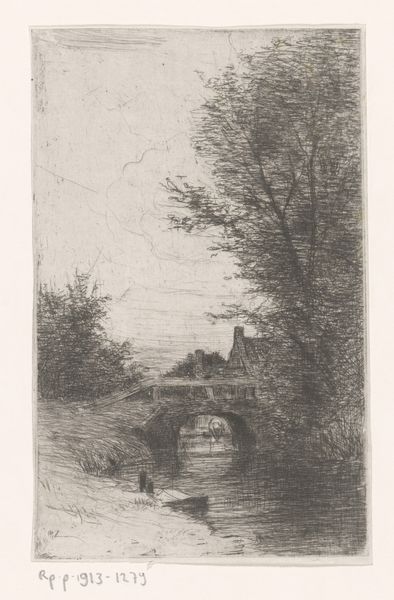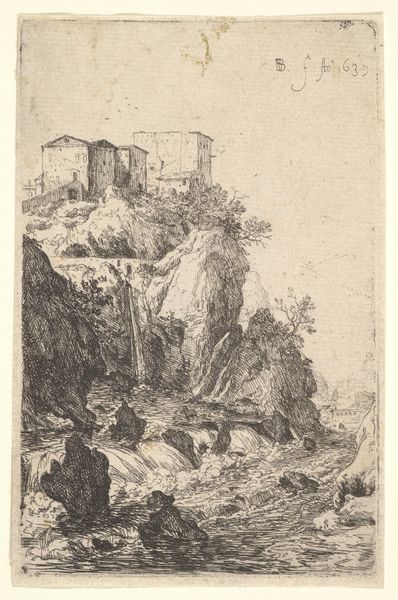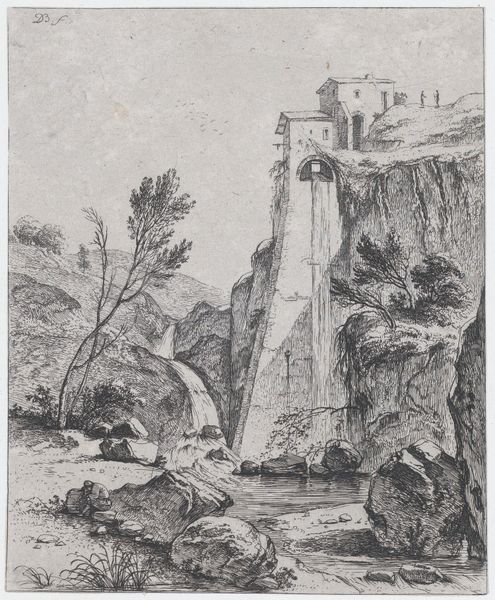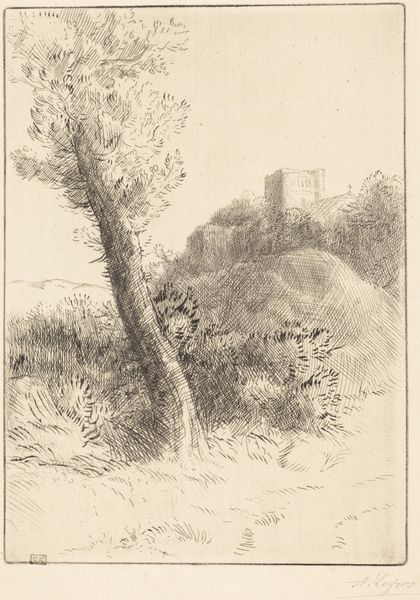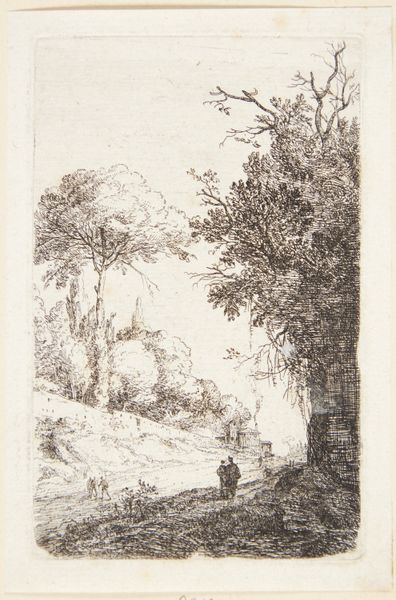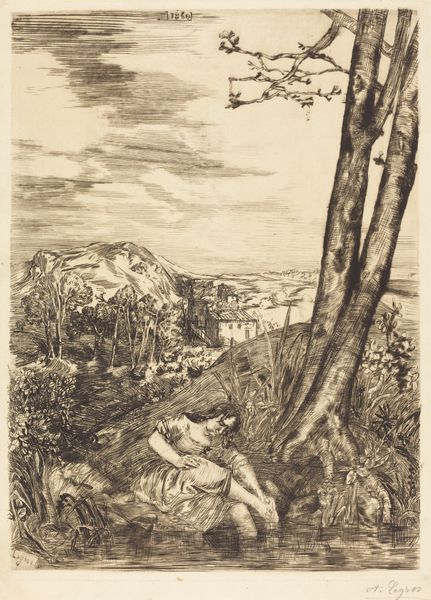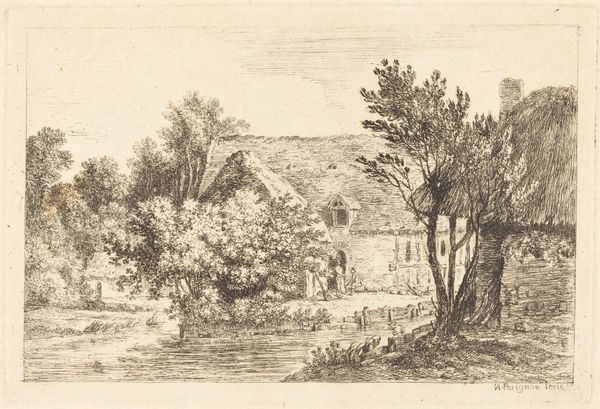
Wash-house, called "The Washerwomen" (Le lavoir, dite "Les Laveuses")
0:00
0:00
drawing, print, etching
#
pen and ink
#
drawing
# print
#
etching
#
landscape
#
etching
#
genre-painting
Copyright: National Gallery of Art: CC0 1.0
Editor: This is "Wash-house, called 'The Washerwomen'," an etching by Alphonse Legros. The scene feels quite still and contemplative; the landscape almost dwarfs the figures by the water. What symbols or stories do you think are woven into this seemingly simple image? Curator: It evokes the cyclical nature of life. Water, the sustainer, is also a site of labor. Consider the postures of the women. Hunched, bowed…are they only washing clothes? What burdens do they carry, both literal and metaphorical? What emotions are embedded? Editor: That's an interesting point, almost suggesting a melancholic mood alongside the everyday task. Does the architecture, the houses in the back, play any part in the story? Curator: Notice the bridge and the tower. Bridges always signify transitions, the passage between states, be it physical or psychological. And the tower, traditionally a place of either refuge or imprisonment...Does that connect with these women, or society itself, and where these figures fit in society? Where they do *not* fit? Legros makes one consider this interplay. Editor: So it's not just about what they are doing, but also where they are positioned in the wider world? Curator: Exactly. These repeated acts connect us to past generations and hint towards the future. We all share basic elements, and that visualizes a collective experience that transcends time, culture, and creed. Does viewing it inspire you to ask questions regarding time and legacy? Editor: Absolutely. I now notice those deeper levels within something initially seen as simple! Thanks for enlightening me. Curator: Indeed! Art often hides its deeper meaning within apparent mundanity. The act of attentive viewing becomes key.
Comments
No comments
Be the first to comment and join the conversation on the ultimate creative platform.
